
Inventions are rarely devised by one person or appear at a precise date. Often there are several individuals working to the same end, at different times and unaware of the others. Think of the motor car, telephone, personal computer or the cinema. Eventually one comes out ahead and is hailed as the 'inventor'.
Coming up with a date when photography was 'invented' is a fraught exercise: 1727, 1802, 1826, 1834 and 1837, are all potential candidates. But like so many inventions photography has its origins in the work of many people working from the late 18th century and, of course, it depends on how one defines photography.
If you took a poll then 1839 would be the date that most people would say that photography was 'invented'.
That year was the culmination of several decades of work and it saw the announcement of two separate photographic processes: Frenchman Louis Daguerre's daguerreotype and Britain's Henry Talbot's photogenic drawing process.
Of these, Daguerre's was by far the most successful commercially, leading to the growth of portrait studios as it, arguably, produced the better image. Daguerre's process made a single image, Talbot's produced a negative from which multiple positive prints could be made. It was Talbot's process, which he patented as the Calotype in 1841, which formed the basis of photography, with later improvements, until the advent of digital photography from the 1990s.
Joseph Nicéphore Niépce
AP reader Jose Casas-Finet from the United States wrote to the editor recently suggesting that AP commemorate the 200th anniversary of photography this month. He suggested that 16 September 1824 was the first evidence of a photograph from life being made in a letter from Joseph Nicéphore Niépce to his older brother, Claude.
Niépce has a better claim than most for the invention of photography and his experiments in the 1820s helped Daguerre in his invention of the daguerreotype.
This story is from the September 10, 2024 edition of Amateur Photographer.
Start your 7-day Magzter GOLD free trial to access thousands of curated premium stories, and 9,000+ magazines and newspapers.
Already a subscriber ? Sign In
This story is from the September 10, 2024 edition of Amateur Photographer.
Start your 7-day Magzter GOLD free trial to access thousands of curated premium stories, and 9,000+ magazines and newspapers.
Already a subscriber? Sign In
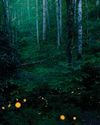
Major OM System launch incoming
AT THE beginning of January, OM System announced that a new camera was coming this year, along with compact, splash- and dust-proof lenses.
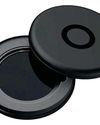
Urth Variable ND641990 Filter Plus+
Angela Nicholson takes a close look at a high-end variable neutral density filter from Urth
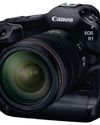
Canon EOS R1
It's super-fast and super-expensive, but does Canon's flagship camera make sense for anyone but professional photographers? Andy Westlake finds out

In glorious technicolour
A new supersized volume looks at the wonderful world of the colour photochrom, circa 1900. Amy Davies spoke to one of the book's authors to find out more
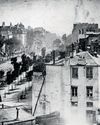
Final Analysis
John Wade considers... Boulevard du Temple by Louis Jacques Mande Daguerre, 1838
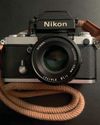
Returning to 35mm
How an unlikely introduction to a Nikon F2AS turned a 35mm sceptic into an advocate.

Risky business
Great pictures happen when fleeting elements come together to form an aesthetically pleasing moment, says fashion and beauty photographer Ian Hippolyte. But it helps if you're willing to take risks, he tells Damien Demolder

Join the Club
This club is active in its local area of Worthing and embraces all levels and genres of photography

Taking a long shot
Emily Endean goes out of her comfort zone to test the Fujifilm XF 500mm F5.6 R LM OIS WR long telephoto prime

The Creative Body: Photographs 2014 - 2024
Here is a collection of poignant and important series from one of Britain's best contemporary documentary photographers, says Amy Davies
